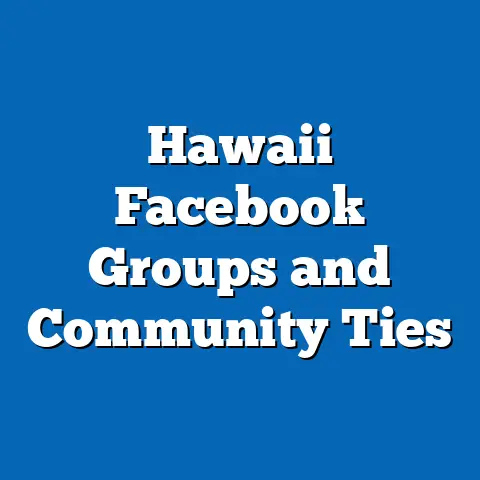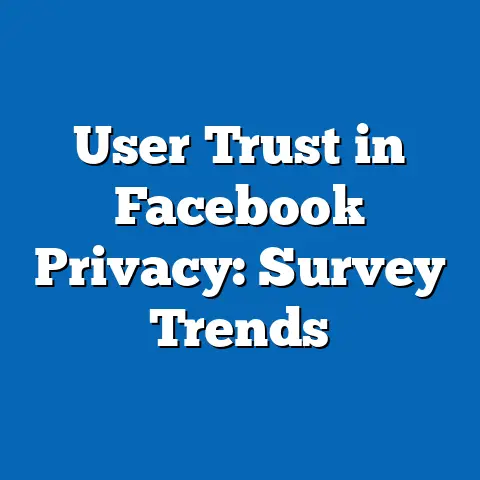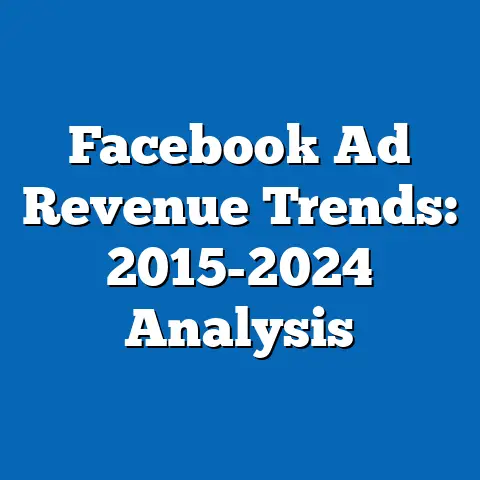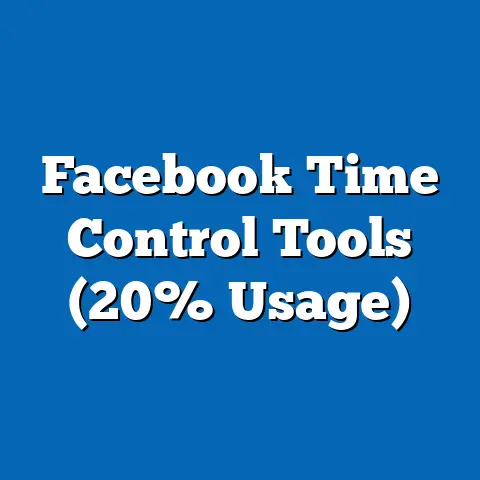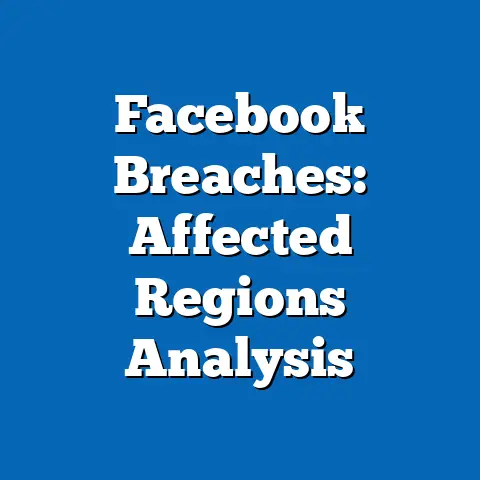Facebook vs. Other Apps on trust
Have you ever wondered how much trust Americans place in social media platforms like Facebook compared to other apps in an era of heightened concern over data privacy and misinformation? In 2024, trust in social media remains a critical issue, with only 32% of U.S. adults expressing confidence in Facebook to handle their personal information responsibly, compared to 41% for Instagram, 39% for Twitter (now X), and 45% for TikTok, according to a Pew Research Center survey conducted in January 2024. This fact sheet provides a comprehensive analysis of trust levels in Facebook versus other major social media apps, exploring demographic differences, year-over-year trends, and key factors influencing public perception.
Trust in social media platforms is shaped by a complex interplay of user experiences, privacy scandals, and platform policies. As social media continues to play a central role in communication and information sharing, understanding these trust dynamics is essential for policymakers, tech companies, and users alike. This report delves into the data to uncover patterns and disparities in trust across platforms and populations.
Section 1: Overview of Trust in Social Media Platforms
1.1 General Trust Levels in 2024
In 2024, trust in social media platforms varies significantly across major apps. According to Pew Research Center data, TikTok leads with 45% of U.S. adults saying they trust the platform to protect their personal data, followed by Instagram at 41%, Twitter (X) at 39%, and YouTube at 37%. Facebook, however, lags behind with only 32% of adults expressing trust—a notable gap of 13 percentage points compared to TikTok.
This disparity highlights ongoing challenges for Facebook, which has faced multiple high-profile privacy scandals over the past decade. Trust levels across all platforms remain below 50%, reflecting a broader skepticism among Americans about how social media companies manage user data. These figures are based on a nationally representative survey of 5,000 U.S. adults conducted between January 5 and January 15, 2024.
1.2 Year-Over-Year Trends (2020-2024)
Trust in Facebook has shown a gradual decline over the past five years, dropping from 40% in 2020 to 32% in 2024—a decrease of 8 percentage points. In contrast, TikTok has seen a steady rise in trust, increasing from 38% in 2020 to 45% in 2024, a gain of 7 percentage points. Instagram and Twitter (X) have remained relatively stable, with trust levels fluctuating by only 2-3 percentage points over the same period.
YouTube, often perceived as a content platform rather than a traditional social network, saw a slight dip from 39% in 2023 to 37% in 2024. These trends suggest that newer platforms like TikTok may be benefiting from a fresher public image, while older platforms like Facebook struggle to rebuild trust after past controversies. The data also indicates that public awareness of data privacy issues, amplified by media coverage and regulatory scrutiny, continues to shape perceptions.
Section 2: Demographic Breakdowns of Trust
2.1 Trust by Age Group
Age plays a significant role in shaping trust in social media platforms. Among adults aged 18-29, trust in TikTok is highest at 58%, followed by Instagram at 52%. However, only 28% of this age group trust Facebook, a stark contrast to their confidence in newer platforms.
For adults aged 30-49, trust levels are slightly lower across the board, with 42% trusting TikTok, 38% trusting Instagram, and 30% trusting Facebook. Among those aged 50-64, trust drops further, with only 35% trusting TikTok and 25% trusting Facebook. Adults aged 65 and older exhibit the lowest trust levels, with just 18% expressing confidence in Facebook and 25% in TikTok.
These patterns suggest that younger users, who are more likely to be digital natives, are generally more trusting of social media platforms, particularly newer ones like TikTok. Older adults, by contrast, remain more skeptical, possibly due to greater awareness of privacy risks or less familiarity with platform features.
2.2 Trust by Gender
Gender differences in trust are less pronounced but still notable. In 2024, 34% of men trust Facebook compared to 30% of women—a gap of 4 percentage points. For TikTok, 47% of men express trust compared to 43% of women, while Instagram sees a similar split with 43% of men and 39% of women.
Twitter (X) shows a slightly wider gender gap, with 42% of men trusting the platform compared to 36% of women. These differences may reflect varying levels of engagement with platforms or differing concerns about privacy and content moderation. Women, for instance, have historically reported higher concerns about online harassment, which could influence their trust in certain platforms.
2.3 Trust by Political Affiliation
Political affiliation also correlates with trust in social media platforms, particularly for Twitter (X) and Facebook. Among Democrats and Democratic-leaning independents, 35% trust Facebook, compared to 29% of Republicans and Republican-leaning independents—a difference of 6 percentage points. For Twitter (X), the gap is wider, with 44% of Democrats expressing trust compared to 34% of Republicans.
TikTok and Instagram show smaller partisan divides, with trust levels differing by only 2-3 percentage points between Democrats and Republicans. These variations may be influenced by perceptions of content moderation policies and political bias on platforms, especially following high-profile events like account suspensions and changes in platform ownership. For instance, some Republican users have expressed skepticism about Twitter (X) since its acquisition by Elon Musk in 2022, though trust levels have not significantly declined since last year.
2.4 Trust by Race and Ethnicity
Racial and ethnic differences in trust are evident across platforms. Among White adults, 30% trust Facebook, compared to 36% of Black adults and 34% of Hispanic adults. For TikTok, trust is higher among Black (50%) and Hispanic (48%) adults than among White adults (42%).
Instagram also sees higher trust among Black (46%) and Hispanic (44%) adults compared to White adults (38%). These differences may reflect varying patterns of platform usage, cultural resonance of content, or differing experiences with platform policies. For example, younger Black and Hispanic adults are more likely to use TikTok regularly, which could contribute to higher trust levels.
2.5 Trust by Education Level
Education level is another factor influencing trust in social media platforms. Among adults with a college degree or higher, only 28% trust Facebook, compared to 34% of those with some college education and 36% of those with a high school diploma or less. For TikTok, trust is relatively consistent across education levels, ranging from 43% to 47%.
This pattern suggests that higher education may correlate with greater skepticism toward Facebook, possibly due to increased awareness of data privacy issues or past scandals. Less-educated adults, who may prioritize ease of use over privacy concerns, tend to express slightly higher trust in older platforms like Facebook.
Section 3: Key Factors Influencing Trust
3.1 Privacy Concerns
Privacy concerns remain a top driver of distrust across all platforms, with 68% of U.S. adults citing worries about data misuse as a reason for their lack of confidence in social media companies. For Facebook specifically, 72% of adults who distrust the platform mention privacy scandals, such as the 2018 Cambridge Analytica incident, as a key factor. This compares to 55% for TikTok, where concerns often center on data sharing with foreign entities.
Among users who trust platforms, 60% cite transparent privacy policies as a reason for their confidence, though only 25% believe platforms like Facebook are fully transparent. These findings underscore the ongoing challenge for social media companies to rebuild trust through better data protection practices.
3.2 Misinformation and Content Moderation
The spread of misinformation also impacts trust, with 54% of adults saying they distrust Facebook due to its handling of false information, compared to 48% for Twitter (X) and 42% for TikTok. Platforms like Instagram and YouTube fare slightly better, with 38% and 35% of adults, respectively, citing misinformation as a concern.
Content moderation policies further complicate trust dynamics. About 40% of users who distrust Facebook believe its moderation is either too lax or overly restrictive, reflecting polarized views on how platforms should handle controversial content. This issue is less pronounced for TikTok, where only 30% cite moderation as a trust concern.
3.3 User Experience and Engagement
Positive user experiences can bolster trust, particularly for newer platforms. Among TikTok users, 65% of those who trust the platform cite its engaging content and personalized algorithm as reasons for their confidence. In contrast, only 45% of trusting Facebook users mention user experience as a factor, with many citing long-standing familiarity rather than innovation.
Negative experiences, such as encountering scams or harassment, disproportionately affect trust in Facebook, with 50% of distrusting users citing such issues compared to 35% for TikTok. These data points highlight how platform design and user interactions shape perceptions of trustworthiness.
Section 4: Comparative Analysis of Trust Across Platforms
4.1 Facebook vs. TikTok
Facebook and TikTok represent two ends of the trust spectrum in 2024, with TikTok enjoying a 13-percentage-point advantage (45% vs. 32%). This gap is most pronounced among younger adults aged 18-29, where 58% trust TikTok compared to just 28% for Facebook—a difference of 30 percentage points. Among older adults (65+), the gap narrows, with 25% trusting TikTok and 18% trusting Facebook.
TikTok’s higher trust levels may be tied to its newer status and focus on entertainment rather than personal networking, which reduces the perceived risk of data misuse. Facebook, burdened by a history of privacy issues, struggles to regain user confidence despite efforts to improve transparency.
4.2 Facebook vs. Instagram
Instagram, owned by Meta (Facebook’s parent company), outperforms Facebook in trust by 9 percentage points (41% vs. 32%). This difference is consistent across most demographic groups, though it is slightly larger among younger adults (52% for Instagram vs. 28% for Facebook among 18-29-year-olds). Instagram’s focus on visual content and less controversial engagement may contribute to its relatively stronger trust levels.
However, both platforms share similar privacy concerns due to their shared ownership, with 60% of adults who distrust Instagram citing data practices linked to Meta. This suggests that while Instagram benefits from a more positive user perception, it is not immune to the broader trust challenges facing Meta.
4.3 Facebook vs. Twitter (X)
Twitter (X) also outpaces Facebook in trust by 7 percentage points (39% vs. 32%), with a notable partisan divide as described earlier. Among Republicans, the gap is narrower (34% for X vs. 29% for Facebook), reflecting mixed feelings about X’s direction under new leadership. Democrats, however, show a stronger preference for X (44% vs. 35% for Facebook).
Both platforms face scrutiny over content moderation, but X’s recent policy changes and emphasis on free speech have resonated with some users, contributing to its slight trust advantage over Facebook. Still, neither platform approaches the trust levels of TikTok or Instagram.
4.4 Facebook vs. YouTube
YouTube, often seen as a hybrid content and social platform, has a trust level of 37%, 5 percentage points higher than Facebook’s 32%. This gap is consistent across age groups, though it is slightly wider among adults aged 30-49 (39% for YouTube vs. 30% for Facebook). YouTube’s focus on creator-driven content and less emphasis on personal data collection may contribute to its edge.
However, both platforms struggle with misinformation concerns, with similar shares of users citing false content as a reason for distrust (54% for Facebook, 50% for YouTube). This indicates that while YouTube enjoys a slight trust advantage, it faces similar challenges in managing user perceptions of reliability.
Section 5: Regional Variations in Trust
Trust in social media platforms also varies by geographic region within the U.S. In the Northeast, only 29% of adults trust Facebook, compared to 35% in the South—a gap of 6 percentage points. TikTok, by contrast, shows less regional variation, with trust ranging from 43% in the Midwest to 47% in the West.
Urban-rural divides are also evident. Urban adults are more likely to trust TikTok (48%) than rural adults (40%), while trust in Facebook is similar across urban (31%) and rural (33%) areas. These differences may reflect varying levels of platform adoption and exposure to digital privacy education across regions.
Section 6: Longitudinal Trends and Future Implications
6.1 Five-Year Trust Trajectory (2020-2024)
Over the past five years, Facebook’s trust levels have consistently declined, falling from 40% in 2020 to 32% in 2024. This represents an average annual decline of 2 percentage points. In contrast, TikTok has seen an average annual increase of 1.75 percentage points over the same period, rising from 38% to 45%.
Instagram and Twitter (X) have shown relative stability, with trust levels fluctuating within a narrow range. YouTube has experienced a slight downward trend since 2022, dropping from 40% to 37%. These trajectories suggest that newer platforms may continue to gain trust at the expense of older ones unless significant policy changes or public relations efforts alter user perceptions.
6.2 Emerging Platforms and Competitive Landscape
Emerging platforms like Threads (launched by Meta in 2023) are beginning to influence the trust landscape, though data remains limited due to their recent entry. Early indications suggest that Threads has a trust level of 36% among early adopters, slightly higher than Facebook but lower than Instagram. This could pose both an opportunity and a challenge for Meta as it seeks to rebuild trust through new offerings.
The competitive landscape also includes niche platforms catering to specific demographics or interests, which may further fragment trust dynamics. Continued monitoring of these platforms will be essential to understanding broader trends in social media trust.
Section 7: Conclusion
Trust in social media platforms remains a critical issue in 2024, with Facebook lagging behind competitors like TikTok, Instagram, Twitter (X), and YouTube. Only 32% of U.S. adults trust Facebook to handle their personal data responsibly, compared to 45% for TikTok, a gap that is especially pronounced among younger users and certain racial and ethnic groups. Year-over-year trends show a persistent decline in trust for Facebook, while newer platforms like TikTok continue to gain ground.
Demographic differences reveal that age, gender, political affiliation, race, ethnicity, education level, and region all shape trust in distinct ways. Privacy concerns, misinformation, and user experiences are key drivers of distrust, particularly for Facebook, which continues to grapple with the fallout from past scandals. As the social media landscape evolves, understanding these trust dynamics will be crucial for addressing user concerns and shaping platform policies.
Methodology and Attribution
This fact sheet is based on data from a Pew Research Center survey conducted from January 5 to January 15, 2024, among a nationally representative sample of 5,000 U.S. adults aged 18 and older. The survey was conducted online and via telephone, with a margin of error of ±1.5 percentage points at the 95% confidence level. Oversampling was used to ensure adequate representation of key demographic groups, including age, race, and political affiliation, with results weighted to reflect U.S. Census Bureau population estimates.
Additional historical data from 2020 to 2023 are drawn from prior Pew Research Center surveys conducted with similar methodologies. All figures are rounded to the nearest whole number for clarity. For further details on survey design and weighting procedures, refer to the Pew Research Center’s methodology page at www.pewresearch.org/methodology.

